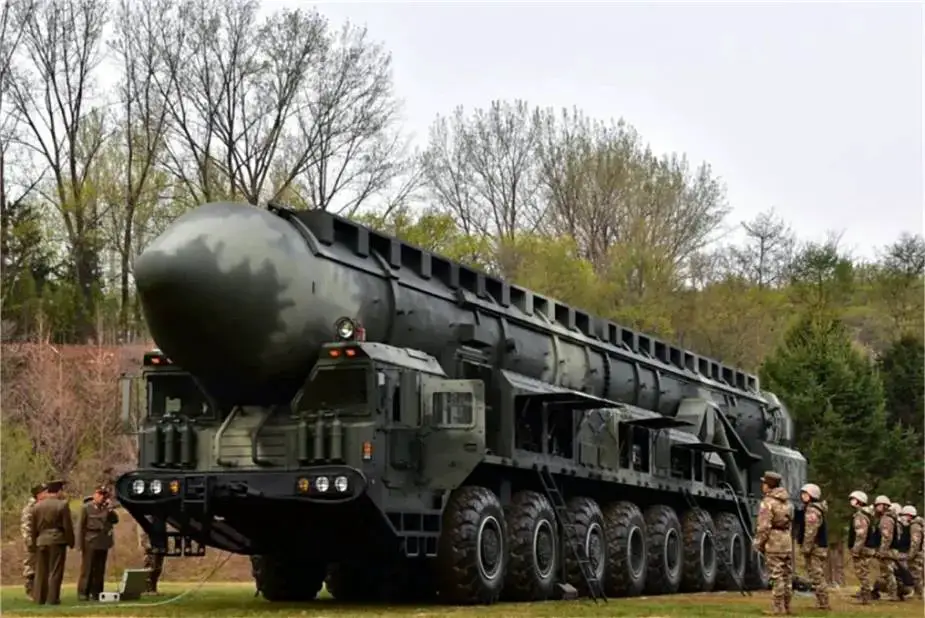Breaking news
North Korea Successfully Launches Hwasong-18 Intercontinental Ballistic Missile.
On July 12, 2023, North Korea successfully launched its first Hwasong-18 intercontinental ballistic missile (ICBM). The launch took place shortly after the country threatened to take action in response to what it deemed provocative reconnaissance activities by the United States in its airspace.
Follow Army Recognition on Google News at this link

Hwasong-18 Intercontinental Ballistic Missile (Picture source: North Korea Ministry of the People's Armed Forces )
Experts believe that North Korea tested its developmental Hwasong-18, a solid-fuel, road-mobile missile known for its nuclear capabilities. The Hwasong-18 is considered more difficult to detect and intercept than North Korea's previous liquid-fuel ICBMs. North Korean leader Kim Jong Un has previously described it as the most powerful weapon in the country's nuclear arsenal.
According to assessments from South Korea and Japan, the missile was launched from North Korea's capital region, traveled approximately 1,000 kilometers (620 miles), and reached a maximum altitude of 6,000 kilometers (3,730 miles) before landing in the waters between the Korean Peninsula and Japan. Observers noted that the missile was launched at a high angle, possibly to avoid entering the airspace of neighboring countries.
The Hwasong-18 is estimated to have a mass of 55 to 60 tons, with a length of approximately 25 meters and a diameter of around 2 meters. Its warhead is believed to be a nuclear weapon, possibly equipped with multiple independently targetable reentry vehicles (MIRV), weighing an estimated 1.25 to 1.5 tons.
Powered by a three-stage solid fuel rocket motor with a propellant mass of 140 tons, the Hwasong-18 boasts remarkable operational capabilities. It is estimated to have an impressive operational range of approximately 15,000 kilometers, allowing it to reach targets far beyond North Korea's borders. Furthermore, it can achieve a flight altitude of 6,648 kilometers, demonstrating its potential to overcome missile defense systems.
The Hwasong-18 is launched from a 9-axle transporter erector launcher, showcasing its mobility and adaptability in various operational scenarios. This transportable launcher enables North Korea to deploy the missile swiftly, making it harder for adversaries to locate and target.
The development and production of the Hwasong-18 began in 2023 and continue to the present day. However, the exact number of missiles produced remains unknown.
Japanese Chief Cabinet Secretary Matsuno Hirokazu revealed that the missile's flight time was 74 minutes, surpassing the previous record set by North Korea's liquid-fuel Hwasong-17 ICBM test last year.
The recent launch marks the second flight test of the Hwasong-18, according to Kim Dong-yub, a professor at the University of North Korean Studies in Seoul. North Korea had previously accused the United States of flying a military spy plane near its territory, which led to an escalation of tensions between the two countries. The United States and South Korea rejected these accusations and urged North Korea to avoid actions or rhetoric that could further escalate the situation.
As tensions continue to rise, North Korea remains committed to developing a series of missiles. This launch of the Hwasong-18 ICBM signifies a significant step forward, given its trajectory and estimated flight duration. It will be important to monitor future developments in North Korea's ability to deploy intercontinental ballistic missiles.


























